Seventeenth-Century Water Gardens and the Birth of Modern Science
November 2014 - Wrapping it up for the Winter
Back to Introduction and Contents
Of course every
archaeologist knows about back-filling and if you are lucky someone
comes along driving a digger and does it for you, however, we always
understood that due to the sensitivity of the site not to mention
difficulty of access this would have to be done by hand. I had visions
of crisp autumn days with a chill in the air and the smoke of bonfires
in the nose and a manly swinging of the spade, honest to goodness
toiling in the fields... well almost. What we got were a couple of
weeks which were not only wet but actually felt hot! Even so we got on
with it, slipping and sliding on the muddy bank and by the end of the
second week the long section was pretty well filled in except for a
small area at the very top so we could continue to show off our ashlar
blocks to visitors.

... and this is what a backfilled trench looks like. the post marks the line of the lower wall.
Along at the Temple of Flora there was more recording to be done and shortly after the bulk of the plans and elevations had been completed a major rain storm bought down several of the more unstable blocks in the wall despite our efforts to shore them up. This was not a complete disaster as it enabled us for the first time to examine and take samples of the mortar holding it all together... or not as the case may be.

... and this is what a backfilled trench looks like. the post marks the line of the lower wall.
Along at the Temple of Flora there was more recording to be done and shortly after the bulk of the plans and elevations had been completed a major rain storm bought down several of the more unstable blocks in the wall despite our efforts to shore them up. This was not a complete disaster as it enabled us for the first time to examine and take samples of the mortar holding it all together... or not as the case may be.
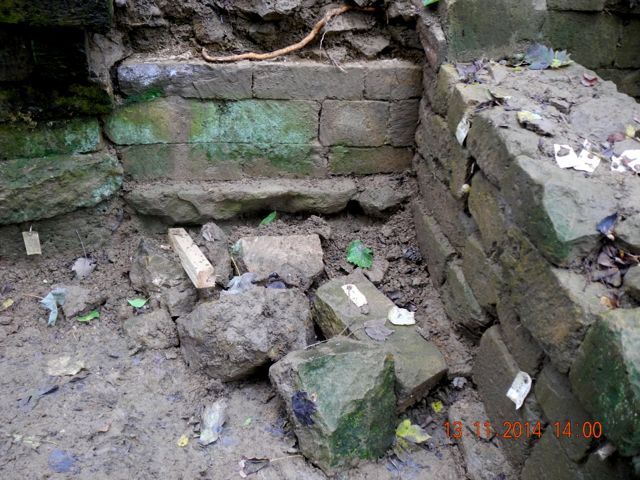
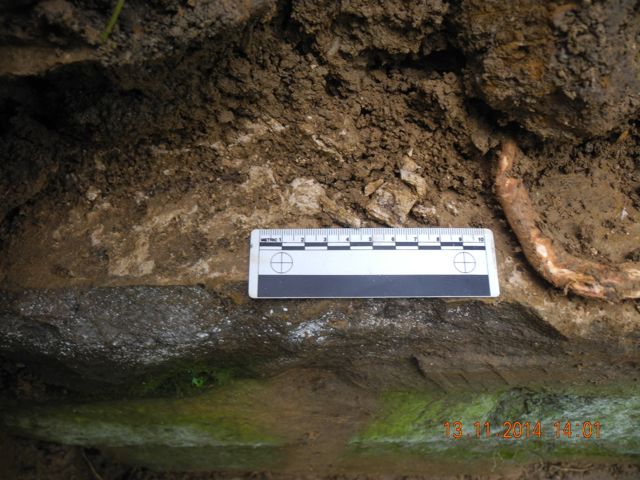
Collapse at the Temple of Flora with a detail of the mortar uncovered.
The following
week, drawings to hand, Peter and Mike rebuilt the collapsed portions
by cutting back some of the core and resetting the stones in a suitably
vertical fashion. We were also able to take a look at the butt join
between the two lines of walling. After that further fantastic efforts
with lugging heavy buckets of wet clay and rubble around to back fill
the area to the level of the lowest courses of faced stones before
scattering topsoil around leaving it all ready for replanting the
snowdrops.
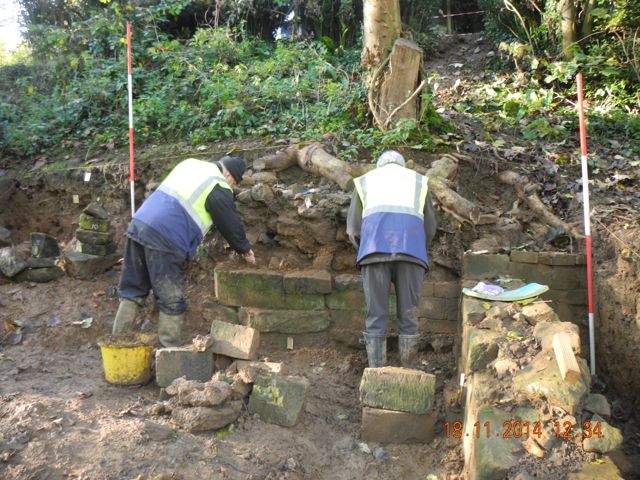
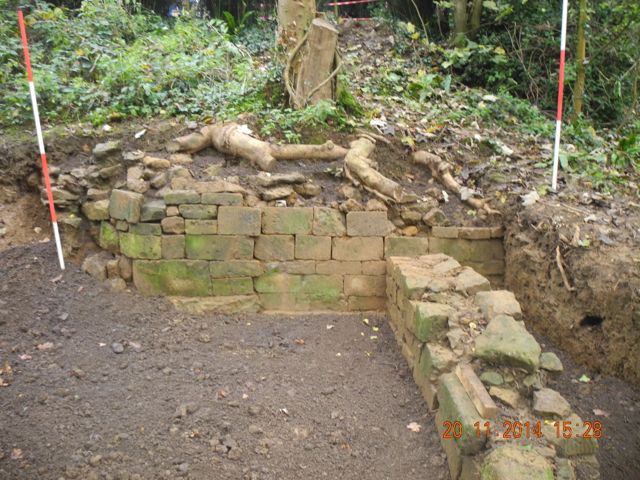
One of them really should be called Bob.. and here it all is tided up and ready for planting.
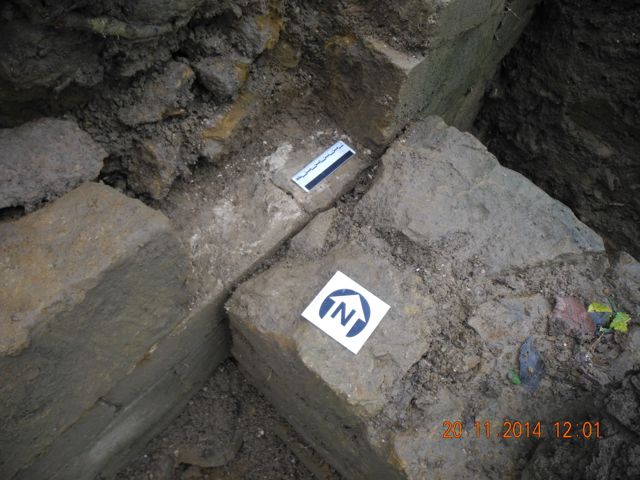
Detail of the butt jointing.
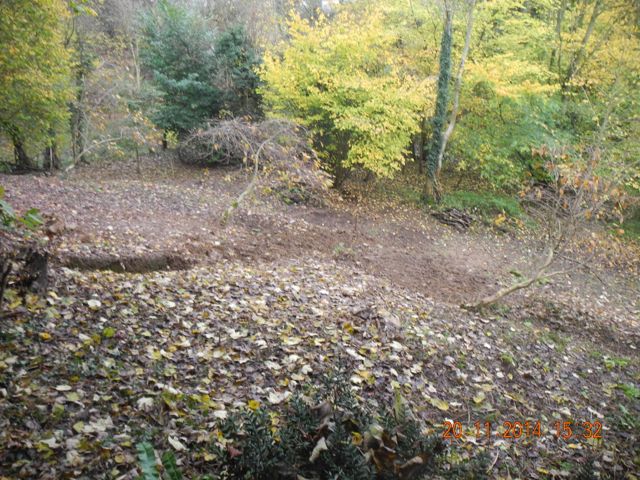
And back to the long section the last pile of earth has disappeared and the earthwork profiles restored.
In fact the
falling leaves smother the traces of former excavations quite nicely.
Having vacated the terrace slopes attention shifted back down the
valley to the rather neglected HANE, the trench on the island within
our suggested water parterre. there's something very pleasant after
shoveling clay in industrial quantities to return to gentle scraping,
unfortunately we'd just got started when rain stopped play at Hanwell.

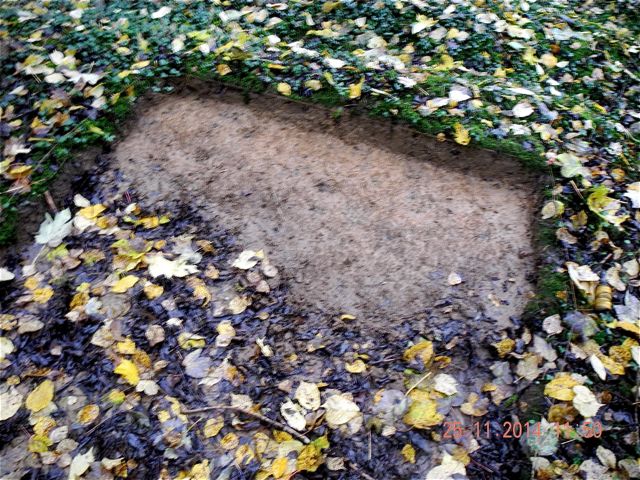
The trench is there, under all the leaves and this is where we'd got to as the rain began.


The trench is there, under all the leaves and this is where we'd got to as the rain began.
Fortunately our
last
day of digging for the month saw a long awaited return to Enstone and a
glorious day after a wet and misty start. People always look politely
disbelieving when I say I'm not that bothered about finding things,
finding out, that's different but finding stuff generally just means
loads of paperwork. However, finds become really satisfying, not to say
valuable when they help pin down a particular feature of a site to a
particular period and that's what happened in Enstone. We had already
suggested that the top terrace wall was built as a free-standing
structure some way forward from the cut made to create the terrace.
Once the wall was complete the space behind was filled with loose
rubble and an interesting collection of rubbish: a fine little clay
pipe bowl from the opening decades of the seventeenth century, some
salt-glazed stoneware and a selection of coarse red earthenware as it
is called. So for the first time we can date the construction of the
top wall to anytime around 1626!
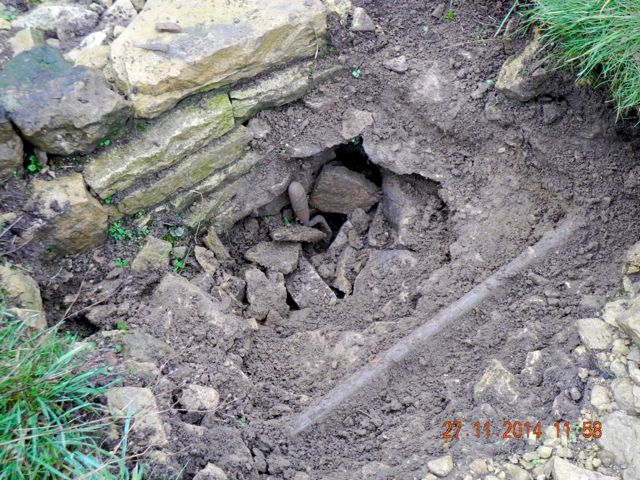
Work starts to remove HANA14 B010, these are what voids look like, plus the line of a later inserted water pipe.
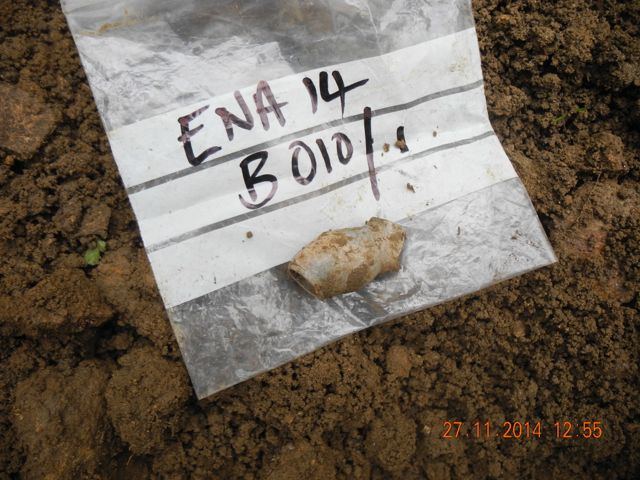
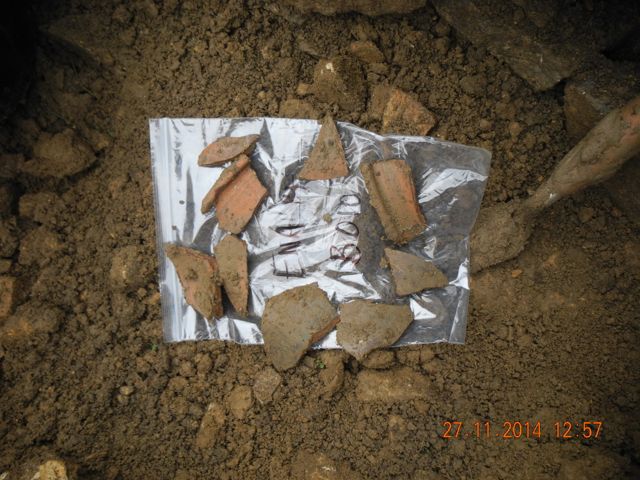
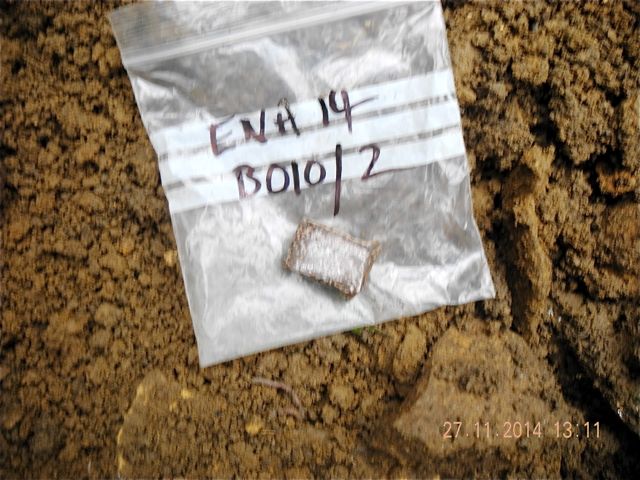
Clay pipe bowl.... Coarse red earthenware.... salt-glazed handle.... all of it thoroughly Jacobean.

And here's the rear of the wall and the rubble packed in behind it, an impossible shot given the angle of the sun.

Work starts to remove HANA14 B010, these are what voids look like, plus the line of a later inserted water pipe.



Clay pipe bowl.... Coarse red earthenware.... salt-glazed handle.... all of it thoroughly Jacobean.

And here's the rear of the wall and the rubble packed in behind it, an impossible shot given the angle of the sun.